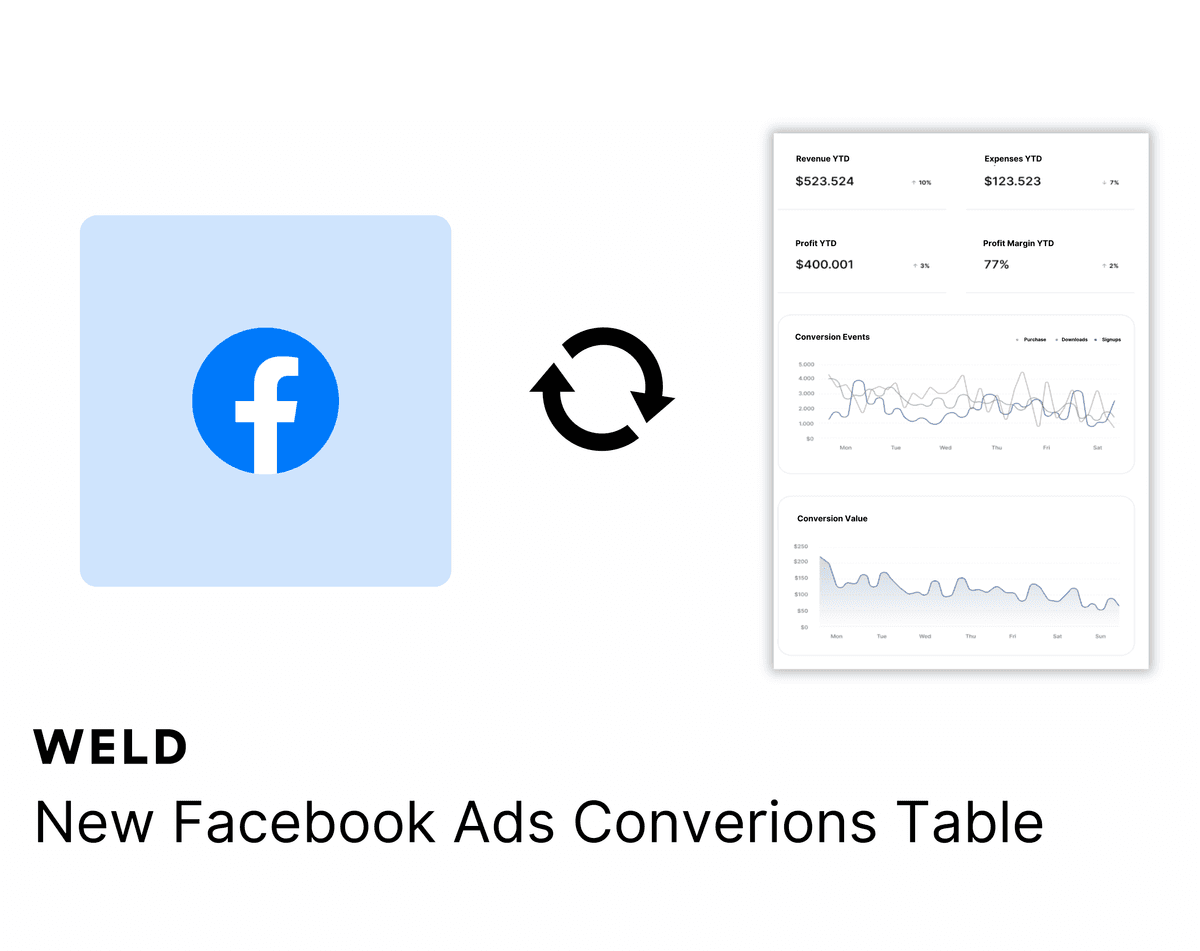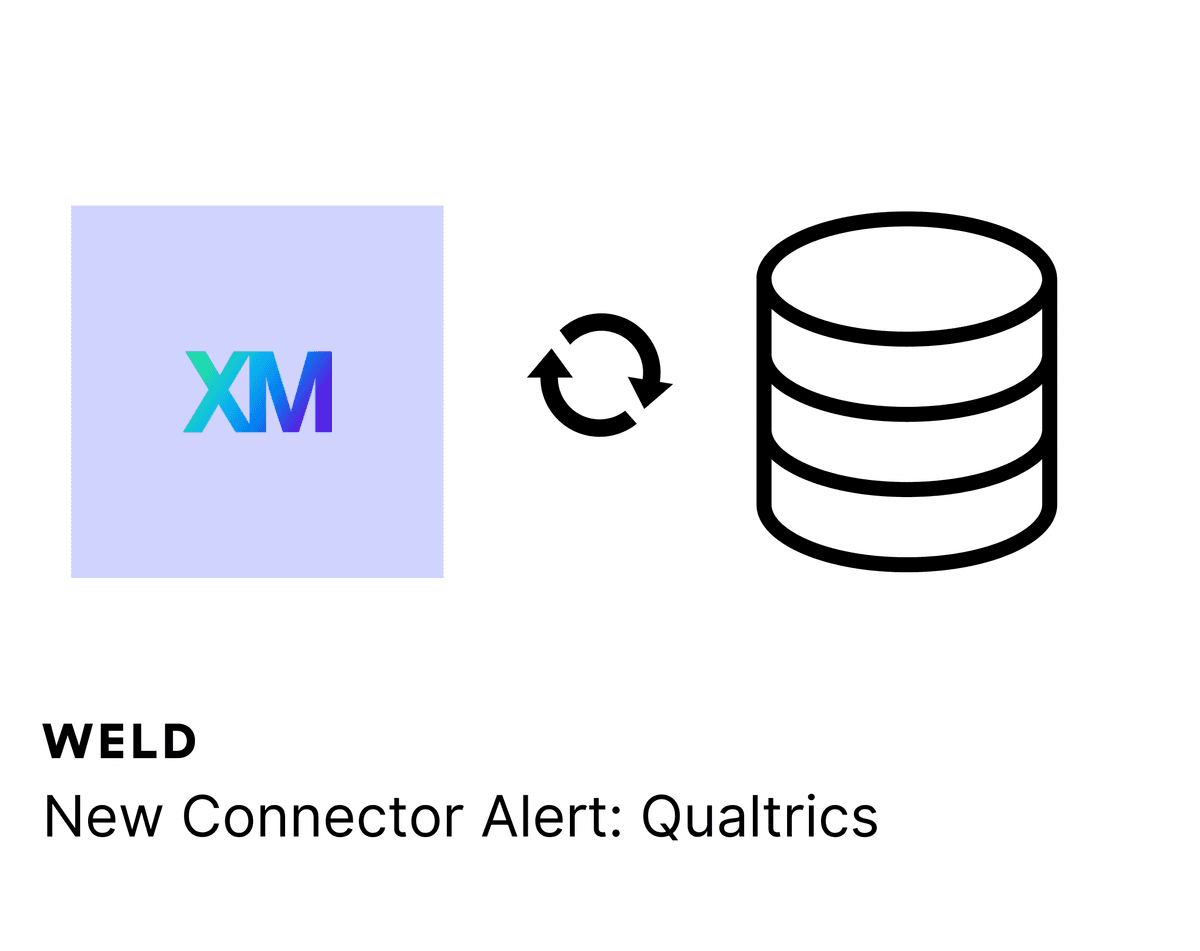%2520marketing%2520performance.jpg&w=1200&q=75)
Marketing is one of the most effective tools that a business can use today. In a global marketplace, marketing helps you stand out, build customer loyalty, and plant the seeds for long-term success.
Marketing can also be a bit complicated, especially without data to help guide you. To keep your marketing effective, you need to make use of the customer data you’re (probably) already collecting.
In this guide, we're going to cover the basics of data in marketing, so you can get the insights you need to outperform the competition.
KPIs and data in marketing
First, let's talk about Key Performance Indicators (KPIs). KPIs are a great way to measure the success of your marketing efforts—but they’re also so much more than that. Your KPIs can help you continually improve your marketing strategy, prioritize the most impactful work, and make data-driven decisions with confidence.
KPIs and marketing data can help you to…
1. Know how effective your campaigns are
Number One, KPIs give you a solid idea of how effective your marketing campaigns truly are.
You may feel that a particular campaign performed well because you heard good things from customers. But a look at the numbers may tell a different story. And conversely, you may be getting little to no customer feedback, which may paint the picture of a failing marketing strategy. Meanwhile, your KPIs are off the chart—except you aren't tracking these, so you don't know you're killing it.
In short, trying to see if your marketing campaigns are working without KPIs is like trying to budget without looking at your bank account. You've skipped the first step.
2. Move towards your marketing goals
Two, KPIs allow you to make progress towards your marketing goals. Similar to training for a marathon, you need to time your laps to know if you're making progress. They help you break down loftier goals into smaller milestones, making them feel more achievable.
KPIs are the analogous solution for marketers. You and your team can look at KPIs to see if a particular approach is working, to what extent it's working, and you can test different strategies to see if another approach will work better.
3. Keep morale and focus high
And Number Three, KPIs are an excellent way to keep your team engaged. Looking at stats can give your team goals to strive for, can serve as a point of celebration and success, and can help everyone keep their eye on the proverbial ball.
Picture this: You’re launching a new product feature and your marketing team is divided on which ad design to promote it with, so they decide to run a test. Both ads go live, and in 3 days’ time, the one with a higher conversion rate wins. People make friendly bets, and at the end of the test, you project the winning ad on a screen in a shared office space. Everyone gathers around and celebrates the win together. The next time a product launch happens, the team feels confident with which design style to go with.
As any team manager knows, maintaining morale is one of the keys to success. If you can do this, then you can keep everyone performing their best, which will lead to stronger, more effective campaigns. Tracking KPIs can build this enthusiasm within your team.
The most common KPIs for marketing performance
There are nearly infinite KPIs that your marketing team could monitor at any given time. To get the most mileage from your data, however, you should only be focused on a few at any given time. Here are some of the most common KPIs to track to improve your marketing performance.
%20marketing%20performance-1.jpg)
Customer Acquisition Cost (CAC)
One of the first KPIs you should track as a marketing manager is CAC, or Customer Acquisition Cost. As it sounds, CAC is the average amount you spend to acquire a customer.
To calculate CAC, take the marketing spend from a particular period (one month, a quarter, etc.) and divide it by the number of customers acquired over that period. For instance, if you spent $1,000 on marketing (social ads, affiliates, search ads, etc.) in a month and acquired 100 customers, then your CAC for that period is $10.
As you track your CAC over time, you’ll start to develop a reliable idea of how much it costs your business to acquire a customer.
Lifetime Value (LTV)
Next is LTV, or Lifetime Value. LTV refers to the revenue you collect from each customer over the lifetime of them doing business with you. If customers usually spend $100 at your business and then never return, your LTV is $100. If they spend $100 every year over a 10-year subscription, then your LTV is $1,000.
There are several instances in which your LTV is useful, not the least of which is to compare it to your CAC. For obvious reasons, your LTV should be higher than your CAC. The higher it is, the better you're doing. And if your LTV is ever below your CAC, you have a serious problem! Generally speaking, you should aim for an LTV that’s 3x your CAC.
This, of course, depends on the type of business you run and the stage you’re at. VC-backed startups, for example, tend to focus on user acquisition and optimize for that metric heavily. Their LTV can be difficult to measure as they’re quickly growing and acquiring customers, so their CAC often outweighs their LTV in the early stages.
Return On Ad Spend (ROAS)
ROAS, or Return On Ad Spend, is the equivalent of ROI for paid marketing. It tells you how much revenue you bring in for every dollar you spend on advertising.
The way you calculate this will vary from business to business as each company will have a different way of measuring the revenue earned from ad spending. For instance, you might look at LTV and compare it against your ROAS. Or if you work in product sales, then you might link sales to marketing efforts and compare them that way.
Either way, ROAS is key to validating (or correcting) the value of your paid marketing spending.
Click-Through Rate (CTR)
CTR is a KPI that measures the percentage of people who click on a particular link against those who have seen it. If you show an ad to 100 people and 50 of them click it, then your CTR is 50%.
Of course, a 50% CTR is wildly unrealistic. Depending on the initiative and channel, a normal CTR is usually around 1%-3%. Tracking your CTR is generally straightforward, as most marketing platforms include CTR tracking by default. This includes most social media advertising, CMS platforms, and eCommerce shops. You can use CTR to get an idea of how your CTAs, links, and ads are performing so you can repeat successes and avoid making the same mistakes twice.
Customer health score
The last KPI to keep track of is your customer health score. Health scores help you monitor how engaged a particular customer is with your business at any given time or how likely they are to churn. A loyal, happy customer will have a high score, while a disgruntled customer looking at competitors would have a low score.
By monitoring health scores, you can improve your customer retention, boost your LTV, and provide better experiences for your customers. You might need a lot of data to calculate a reliable health score for your customers and clients, because it can depend on a variety of factors.
For example: a Net Promoter Score (NPS) might help you measure how many brand ambassadors you have. But this doesn’t necessarily mean that your solution is answering all of their needs. A representative customer health score will likely also take into consideration things like your number of customer support tickets, product upgrades, weekly or daily active users, and more.
How to improve your KPIs
Align your metrics with your goals
There are several ways to improve your KPIs, the first of which is to align your metrics with your goals. As mentioned before, there are countless KPIs that you could be tracking at any time.
You should not, however, be tracking all of them. To decide which is right for your marketing team, you should establish clear goals for your team. Then, focus on the metrics that will help you best measure those goals.
Improve the quality of your data
Another key way to improve your is to improve the quality of your data. That means selecting more reliable sources of data, validating your data more stringently, and keeping your data synchronized across your organization.
Embrace data tools as a pivotal strategy
Lastly, your marketing team should embrace data tools as a pivotal strategy. These can elevate the quality of your data, improve the accessibility of your data, and help you pull richer insights from your metrics.
Improve your marketing today with data tools from Weld
If you're ready to take your marketing to the next level with data-backed solutions, reach out to the team at Weld today. Our data technology can modernize your setup in hours, making you more effective, consistent, and successful in your campaigns.
Continue reading

New Facebook Ads Conversion Table
Analysing your Facebook Ads conversion data has now got easier with our new conversion insights table.

New Connector Alert - Qualtrics
Need better Qualtrics reporting? Weld allows you to seamlessly integrate your Qualtrics data with the rest of data sources, creating a unified view of your business metrics. Enhance your analytics and make more informed decisions with our new ETL connector!

G2 2024 Summer Reports
The G2 2024 summer reports are live and Weld has been awarded 39 badges!





